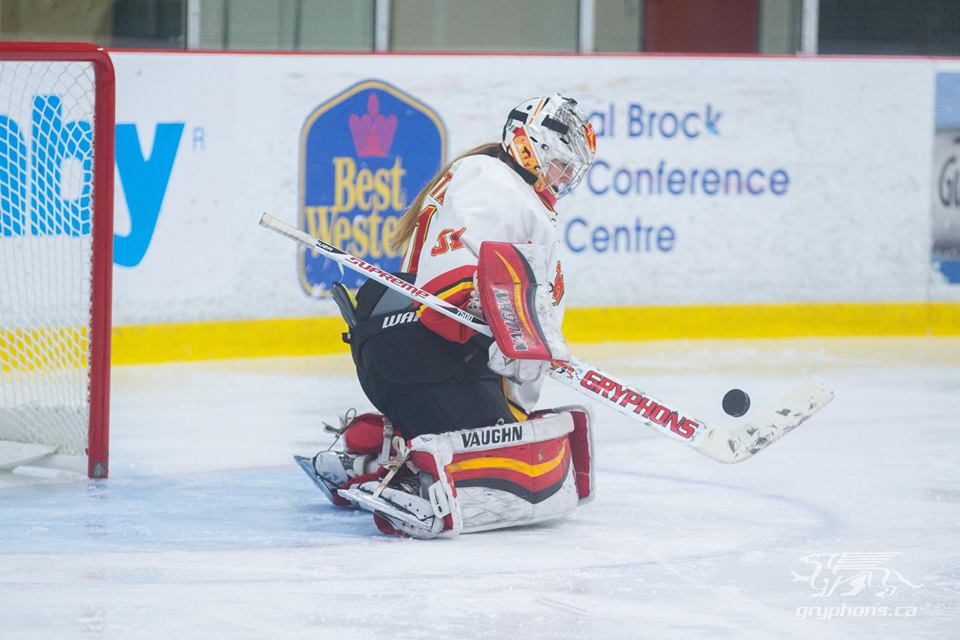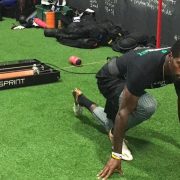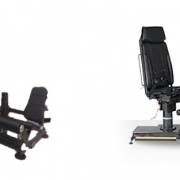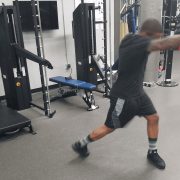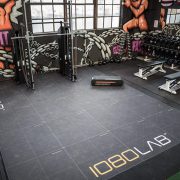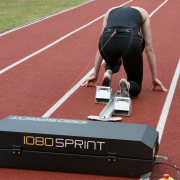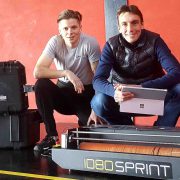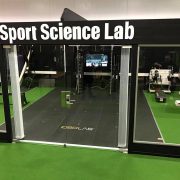Researchers at the University of Guelph are studying the effect that three different hydration states have on ice hockey goalies’ lateral movements. Goalies make reactive movements in response to player and puck positioning to cover the best angle on shots and make saves. There is little research to date on the relationship between hydration, force production, power production and performance in hockey goalies, despite goalies having some of the highest sweat rates among “stop and go” sports.
Devin McCarthy is a graduate student under the advisory of Dr. Lawrence Spriet in the Department of Human Health and Nutritional Sciences at the University of Guelph. Along with Dr. Jamie Burr, they are using the 1080 Sprint to measure goalies’ average and peak force and power, and rate of force development over two sets of 10 post-to-post lateral movements. The subjects are college-aged, skilled hockey goalies who receive one of three hydration interventions: fluid restriction to induce dehydration, hydrated with water or hydrated with a commercially available carbohydrate-electrolyte solution.
The research is an extension of a 2014 study Mark Linseman co-authored with Spriet on hockey “skaters,” i.e., players other than the goalie. They were either dehydrated or ingested a carbohydrate-electrolyte solution throughout a 70-minute scrimmage. That study found that the hydrated players performed better in specific in-game skills and post-game sprints than the dehydrated players. The performances between the groups were notably different in the final 20 minutes of the scrimmage. This indicates a potential application for teams during key moments of competitive games.
Linseman et al also found that dehydrated skaters had a higher core temperature (0.3 C) than those who ingested carbohydrate. The difference in performance between the groups, then, could be due to a self-protective mechanism anticipating further increases in temperature.
Example video of goalie movements:
In situations where goalies are constantly involved in play they consistently produce some of the highest sweat rates on a team. This may be due in part to the extra protective gear they must wear. Since skaters are at risk for dehydration during the later portion of games and practices, goalies are equally or more at risk. This may result in potential further increases in core temperature. If the temperature differences between test groups increase among goalies, the impact of hydration or carbohydrate on performance may increase accordingly.
Linseman et al’s 2014 study did not include a group that ingested plain water. Hydrating with water and carbohydrate ingestion may each intrinsically affect performance. Linseman et al noted a 2009 study that showed that the presence of carbohydrate in the mouth – without ingestion – improved performance in endurance athletes. Muscle glycogen levels likely have little impact on goalie performance, given the nature of their position. Therefore, carbohydrate ingestion may not play as much of a role metabolically. It could, though, improve their performance via attention and motor control.
McCarthy’s study will parse the effects of hydration and carbohydrate on goalie’s performance. This could reveal that the impact of hydration and carbohydrate levels on a goalie’s performance over the course of a game are primarily cognitive and attentional. The study may also show how a goalie’s performance changes over the course of the trial session. That finding could result in potential interventions to improve goalie performance in the latter stages of games and in overtime.
Follow-up research will include more detailed tests of reaction and movement in game-like situations. McCarthy foresees future studies with the 1080 Sprint that incorporate multi-axis movements. That could include reactive movements akin to blocking a shot as well as decision-based movements, such as choosing the appropriate position in relation to the goal. Increasing the cognitive task demands will further reveal the interaction between hydration and carbohydrate on decision-making for athletic performance.
